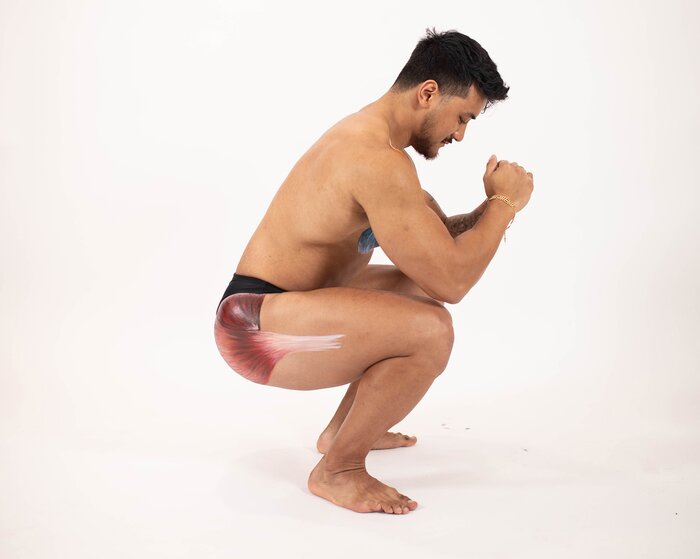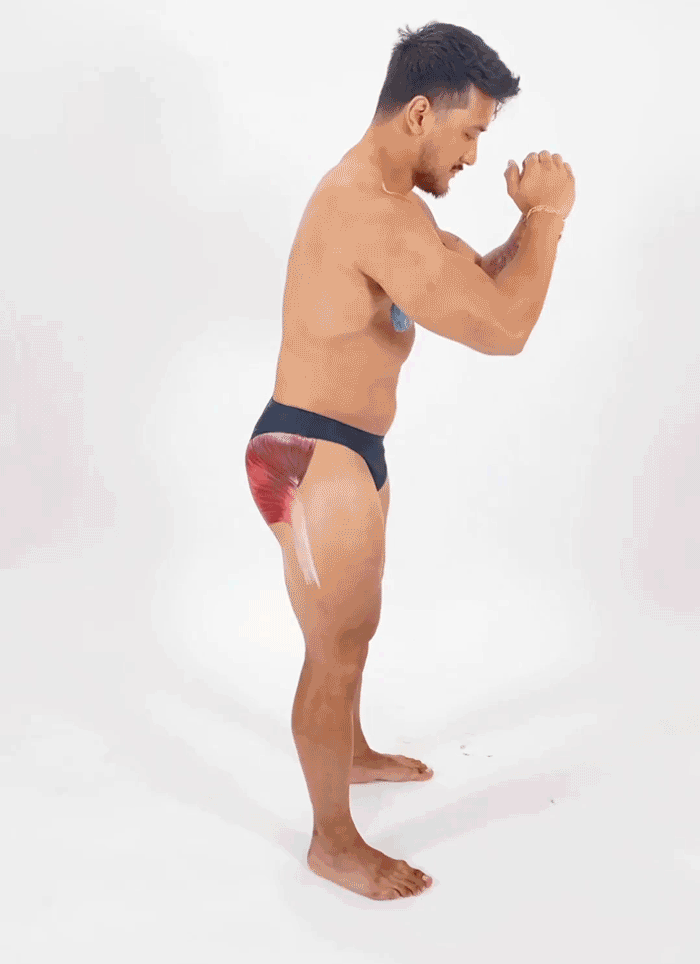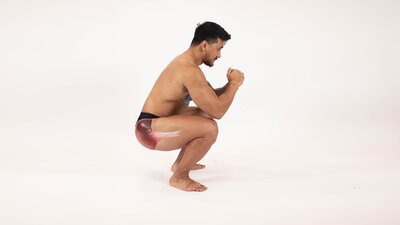Are gym bros telling you your squats are wrong or that you’re doing a half squat? Our answer to that: it depends! There are plenty of ways to do a squat and each type targets a different body part. While it is true that you might be doing squats incorrectly, there’s also a chance you’re just doing a different type of squat, reducing your range of motion in a squat to target a specific body part, or squatting with a narrower stance to target a different part of your body. Today we go over squat width and how to target your glutes and quads.
What Kinds of Squats Target Your Glutes?
The depth of your squat determines which muscles you’re working. A squat where you sit back and squat down until you’ve reached your end range of motion and then come back up targets your glutes.
As you work into deeper ranges and ranges of hip flexion, the adductors add leverage to extend the hips and the glutes lose leverage. Here are some other types of squats you can do to target your glutes:
- Box squat
- Sumo squat
- Barbell squat

What Kinds of Squats Target Your Quads?
A narrower stance will target your quads. A narrower stance will have you focusing on your quads instead of your hips. Here are some squats you can do to activate your quad muscles:
- Split squat
- Heel elevated front squat
- Heel elevated barbell squat
It should be noted that some people may have a more difficult time reaching a deeper squat in a narrower stance due to the positioning of their hips and ankle.
How Does Squat Width Come into Play?
The narrower your squat stance, the more you will activate your quads. A wider stance causes more glute activation. Therefore, if you’d like to target your quads more, narrow your squat stance, and if you’d like to target your glutes more, widen your stance. Use both types of squats to strengthen your legs and glutes.
How Do You Know What Your Squat Width and Depth Should Be?

Most people prefer about a shoulder-width squat stance as going wider could cause some hip discomfort. One way to determine how wide your stance should be is by doing a bodyweight squat and paying attention to your feet. Your weight should be evenly distributed throughout your feet, and you shouldn’t feel any pain in your knees or hips. Note: pointing your toes out could help with ankle mobility issues as well.
When it comes to squat depth, here’s an exercise to see how deep you can go in a squat while strengthening your erectors without compromising your alignment:
- Stand in front of a wall with your feet a hips width distance apart and your arms up.
- Keep your arms up grazing the wall and squat down keeping your chin tucked.
- Stop when you’ve hit your end range of motion or the bottom of your squat (you may fall before this happens).
When it comes to squat depth, you might be able to performed a quarter squat, half squat, or deep squat. These are defined as:
- Deep squat: 120° knee flexion or more
- Half squat: 90° knee flexion
- Quarter squat: 60° knee flexion
Does Squat Width Impact Squat Depth?
Yes, your squat width will impact your depth, for the most part. You can get fairly deep in a narrow squat stance if you have good ankle mobility. You can also get pretty deep in a wider stance if you have solid hip mobility. Remember stance width depends on the individual and varies from person to person. It’s up to you to decide what’s best for you and your body.

